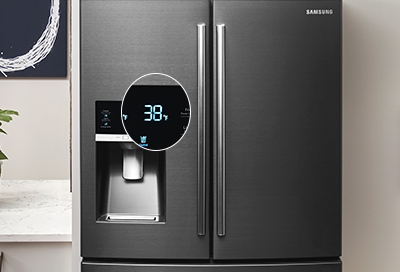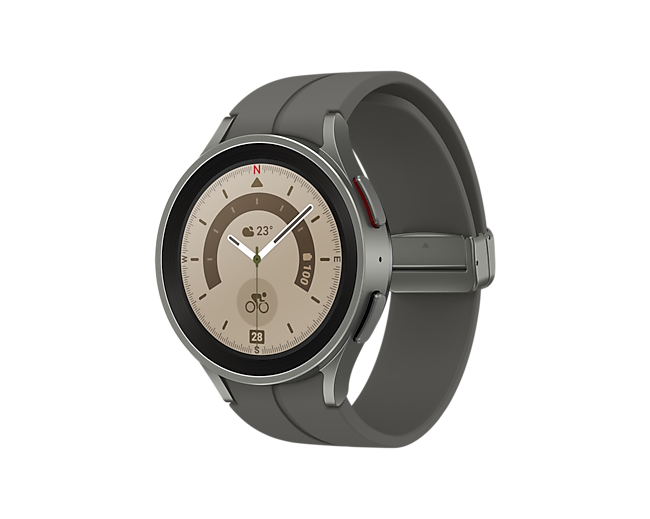The “40 E” error code on a Samsung refrigerator indicates a problem with the ice room fan. This issue requires attention to prevent further complications with the fridge’s cooling functions.
Samsung refrigerators are renowned for their reliability and advanced features. Yet, like any sophisticated appliance, they may occasionally run into issues, displaying error codes to alert users to specific problems. Such error codes serve as a diagnostic tool, helping to pinpoint the area of concern so that you can take appropriate action.
Understanding these codes is essential for maintaining the optimal performance of your refrigerator. Quick troubleshooting guided by error messages like “40 E” not only ensures your fridge runs efficiently but also helps in preventing food spoilage and maintaining food safety. Proper maintenance in response to error codes can also extend the life of your appliance, making it a worthwhile investment for your household.
Decoding The 40 E Error Code
When your Samsung refrigerator flashes 40 E, it’s sending a message. This code indicates an issue with the appliance. To ensure fresh food and effective operation, understanding this alert is key. Let’s decipher what your refrigerator tries to tell you with the 40 E error code.
Common Causes Of The 40 E Code
Different factors may trigger the 40 E error code on Samsung refrigerators. Here are the most likely causes:
- Ice Maker Functionality: Problems with the ice maker often result in 40 E.
- Circuit Board Glitches: Electrical issues can cause various error codes, including 40 E.
- Incorrect Installation: If components are not properly set up, 40 E could appear.
- Power Surges: Unexpected voltage changes might lead to error codes.
- Defective Components: Damaged parts may signal the error.
Interpreting The Refrigerator’s Alert
Interpreting the 40 E code helps you address the issue promptly. This error specifically points to trouble with the ice maker’s fan. If the fan is not working right, the error code pops up. It means the freezer may not keep your ice cream cold! Taking action quickly is essential.
Troubleshooting can include:
- Checking the fan for obstructions.
- Ensuring proper fan function.
- Resetting the refrigerator.
- Consulting the manual or a professional.
A responsive approach keeps your food fresh and fridge happy.

Credit: www.samsung.com
Initial Assessment And Safety Precautions
Seeing ’40 E’ on your Samsung refrigerator display can cause concern. It indicates an error that needs your attention. But, before taking any steps, you must check the basics and stay safe. Below, the guide covers how to start diagnosing this error message.
Checking Power Supply
First, ensure the fridge gets power. Look at the basics:
- Is the power cord plugged in? Confirm it’s not loose or disconnected.
- Check the outlet. Try plugging in another device to see if it works.
- Look at the circuit breaker. Sometimes, they trip and cut off the power.
After these steps, if the fridge still shows ’40 E,’ proceed cautiously.
Safety Measures Before Troubleshooting
Before you start troubleshooting, safety comes first:
- Turn off the refrigerator. This is essential to avoid electric shocks.
- Wear protective gear. Gloves and goggles can protect you.
- Keep tools handy. This includes a multimeter and screwdrivers.
- Do not touch wet surfaces. Electricity and water don’t mix well.
With these measures in place, you’re set to find out why ’40 E’ is on display.
Simple Resets To Resolve The Error
Encounter the daunting 40 E error on your Samsung refrigerator? Fear not! Often, all it needs is a simple reset to spring back to life. Before you call in a technician, try these quick fixes. They’re easy and might save you time and money.
Power Cycle Method
Power cycling can often clear up electronic glitches. It’s like giving your fridge a mini reset. To power cycle your Samsung refrigerator, follow these steps:
- Unplug your fridge from its power source.
- Wait a full minute to let the fridge’s electronic systems reset.
- Plug it back in and observe if the error clears up.
Control Panel Reset Steps
Your fridge’s control panel is its brain. Resetting it can fix the error code. Use the following steps to reset the control panel:
- Locate the power freeze and power cool buttons.
- Press them both at the same time.
- Hold for about 8 seconds until the display goes blank, then release.
- The fridge will chime and reset itself.
After trying these methods, check to see if the error persists. If it’s still there, further troubleshooting or professional help may be necessary.
Inspecting Key Components
The ’40 E’ error code on a Samsung refrigerator signals an issue that requires prompt attention. To diagnose and resolve the problem, a thorough inspection of key components is essential. Let’s dive into the specifics of the ice maker function and the cooling system.
Examining the Ice Maker FunctionExamining The Ice Maker Function
Samsung’s ’40 E’ error often relates to the ice maker. Regular checks ensure it operates smoothly. Below are steps to examine the ice maker:
- Verify the ice maker is on.
- Check for blockages in the chute.
- Ensure the water line isn’t frozen.
- Reset the ice maker if necessary.
Clear any obstructions and reset the system to restore function.
Assessing the Cooling SystemAssessing The Cooling System
The cooling system is critical for refrigerator performance. Follow these steps to assess its operations:
- Listen for unusual noises from the fan.
- Check for frost build-up indicating a defrost issue.
- Ensure seals on the doors are intact.
- Monitor temperature consistency in various compartments.
Maintain clean coils and clear vents for optimal cooling efficiency.
| Component | Signs of Issues | Action Steps |
|---|---|---|
| Ice Maker | No ice production, blockages | Check and reset |
| Cooling System | Warm spots, frost build-up | Clean and inspect |
Cleaning And Maintenance Tips
Maintaining a clean Samsung refrigerator is key to its performance. Knowing how to manage error codes like ’40 E’ is just as crucial. This code usually points to an issue with the defrost system. Regular upkeep can prevent such errors. Below are effective tips to keep the fridge in top shape.
Defrosting Process
Occasionally, a Samsung fridge requires manual defrosting. Here’s how:
- Power off the refrigerator to start the defrost cycle.
- Remove all food items and store them safely.
- Open the doors and let ice melt naturally.
- Use a soft cloth to soak up excess water.
- After defrosting, clean the interior surfaces before turning the fridge back on.
Regular Cleaning Routine
Implementing a frequent cleaning schedule preserves your fridge’s longevity. Do the following:
- Weekly, wipe down interior shelves with a mild detergent.
- Clean bins and accessories with warm, soapy water.
- Dust the refrigerator coils every six months to ensure efficient cooling.
- Inspect and clean door seals to maintain proper temperature.
- Use a damp cloth to wipe the exterior for a gleaming finish.

Credit: www.tcl.com
Advanced Troubleshooting Techniques
Encountering a ’40 E’ error on your Samsung refrigerator can be puzzling. This error often indicates a cooling issue. Before calling a professional, try these advanced troubleshooting techniques to resolve the problem yourself.
Sensor Checks
Examining the sensors is a critical step in troubleshooting. Follow these instructions:
- Locate the temperature sensor.
- Check for any signs of damage or loose connections.
- Use a multimeter to ensure it’s functioning properly.
If the sensor fails these checks, replacing it might be necessary.
Circuit Board Diagnosis
The circuit board acts as the fridge’s brain. A malfunction can cause the ’40 E’ error. To diagnose:
- Unplug your fridge and locate the board.
- Inspect for burn marks or blown capacitors.
- Test connections with a multimeter for consistency.
Resolving circuit board issues may require professional repair or replacement.
When To Call In A Professional
Is your Samsung refrigerator displaying the cryptic ’40 E’ error code? Your tech-savvy instincts could kick in, urging you to fix it yourself. But certain problems require a professional touch. Knowing when to call in a professional can save you time and prevent further damage to your refrigerator.
Recognizing Complex Issues
If your Samsung refrigerator flashes the ’40 E’ code, you face a complex issue. Don’t ignore this warning. An error code often signals specific malfunctions, many of which involve intricate parts of your appliance.
- Electrical complications that could worsen without expert knowledge.
- Complex cooling system failures that require detailed diagnostics.
- Software glitches that need professional software tools.
These are signs that it’s time to step back and consult a certified technician.
Finding A Certified Technician
Locating the right expert for your Samsung refrigerator is crucial. Ensure they have a certification to work on Samsung appliances. Use these steps:
- Visit the official Samsung support website.
- Search for ‘authorized repair centers’ near you.
- Check online reviews for the recommended technicians.
Follow these steps to find someone you can trust with your appliance repair needs.
Preventing Future Error Codes
Preventing future error codes on your Samsung refrigerator goes beyond decoding the mysterious ’40 E’. This error speaks to an ice maker functionality issue. To prevent the display from flashing other alphanumeric puzzles, let’s focus on two major aspects: usage and maintenance.
Adopting Best Usage Practices
To ensure your Samsung refrigerator runs smoothly, adopting best practices is key. This doesn’t only help in avoiding errors but also extends the life of your fridge. Follow these tips:
- Keep the doors closed when not in use to maintain the temperature.
- Avoid overloading the fridge with items, as this can strain the system.
- Ensure that the refrigerator is level so the doors seal properly.
Recommended Maintenance Schedule
A regular maintenance schedule can keep your refrigerator in top condition.
| Interval | Maintenance Task |
|---|---|
| Monthly | Clean the door seals and coils. |
| Every 6 Months | Replace the water filter. |
| Annually | Inspect and clean the condenser fan. |
| As Needed | Defrost if there’s excessive frost buildup. |

Credit: www.samsung.com
Frequently Asked Questions For What Does 40 E Mean On Samsung Refrigerator
What Is Error Code 40 E On Samsung Refrigerator?
Error code 40 E on a Samsung refrigerator indicates an ice maker function error. Contact Samsung support or a qualified technician for assistance.
How Do I Clear The Error Code On My Samsung Refrigerator?
To clear a Samsung refrigerator error code, press and hold the Power Freeze and Power Cool buttons for 5 seconds. This resets the refrigerator. If the error persists, unplug the fridge for 60 seconds, then plug it back in. Contact Samsung support if issues continue.
Why Is My Samsung Fridge Temp Blinking E?
Your Samsung fridge’s temperature display blinking “E” indicates an error with the cooling system. Contact Samsung support or a technician for assistance.
Why Is My Samsung Fridge Blinking 40c?
Your Samsung fridge is blinking 40C to indicate a cooling function error, possibly due to a faulty fan or defrost system malfunction. Contact Samsung support or a technician for assistance.
Conclusion
Troubleshooting a Samsung refrigerator displaying the error ’40 E’ can seem daunting. Rest assured, it’s a clear signal to check the ice maker functionality. Regular maintenance and prompt action can keep your appliance running smoothly. Remember, for persistent issues, seeking professional help is advisable.
Keep your fridge’s performance at its peak with these insights.
